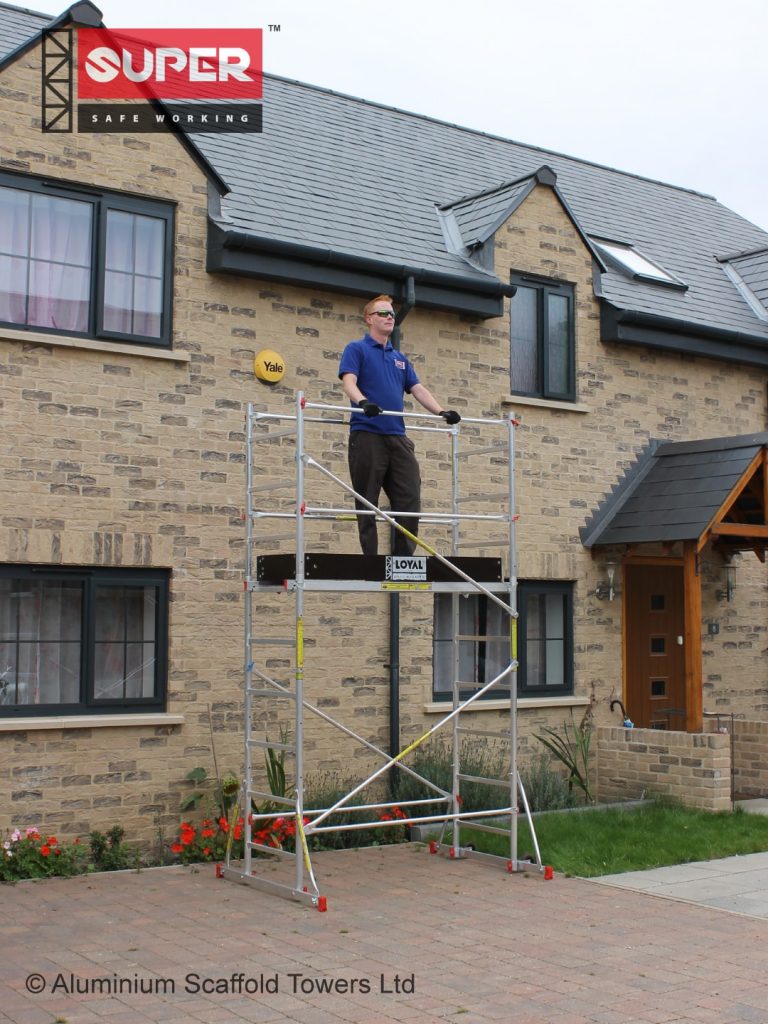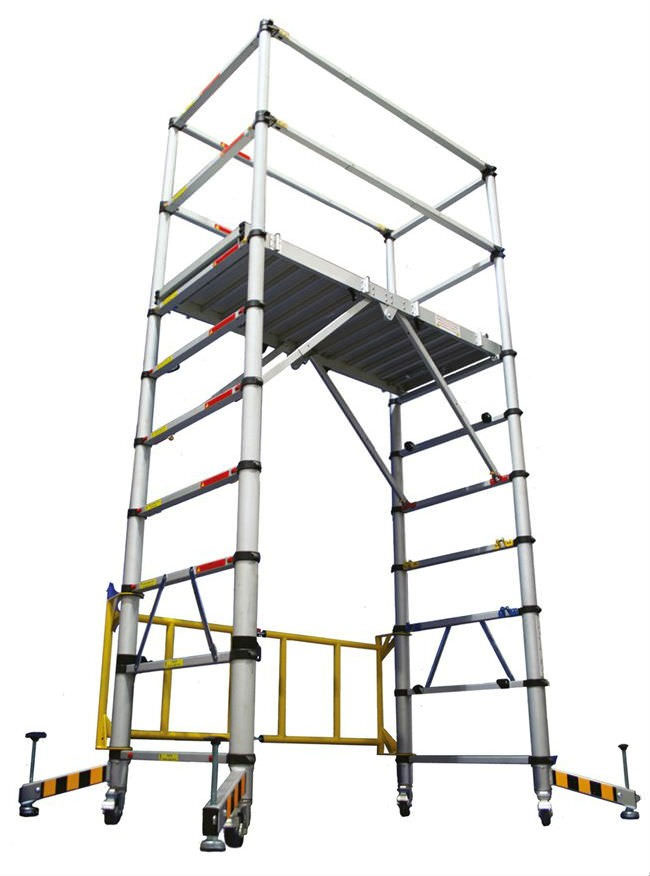Safe and Secure: Top-Notch Scaffolding Solutions

Technologies in Scaffolding Technology: Whats New?
The latest scaffolding advancements focus on safety with innovative sensor innovation for stability and immediate treatment. Ergonomic layout improves user convenience and performance. Light-weight composites like carbon fiber and fiberglass offer adaptability and ease of modification. Mobile scaffolding solutions improve employee efficiency with very easy transport and fast setting up. Smart technology integration consists of remote tracking for real-time information on security and predictive maintenance analysis. Sustainable methods focus on recyclable products and energy-efficient services. These developments in scaffolding modern technology showcase a new period of improved security, efficiency, and sustainability in building.
Enhanced Safety Features

Executing state-of-the-art sensing unit innovation has actually changed the safety features in modern scaffolding systems. These advancements have significantly enhanced stability and security for employees at building sites. Sensing units installed within the scaffolding can detect any kind of potential instability or tension on the framework, giving real-time comments to employees and managers. This prompt notification permits fast treatments to stop crashes and injuries.
Moreover, ergonomic technologies in scaffolding style have actually likewise played a necessary function in improving safety and security. Scaffolding systems are now made with a focus on customer convenience and effectiveness. Attributes such as flexible elevations, easy setting up, and lightweight products decrease stress on workers' bodies, minimizing the danger of bone and joint injuries. Furthermore, ergonomic handrails and platforms supply much better stability and support for employees while moving around the scaffolding.
Advanced Materials and Designs
The advancement of scaffolding modern technology has resulted in the assimilation of innovative products and ingenious styles, changing the building sector. Light-weight composites and modular systems go to the leading edge of these improvements, using enhanced performance and safety on building and construction sites.
Lightweight composites, such as carbon fiber and fiberglass, have replaced conventional steel parts in contemporary scaffolding systems. These products provide the necessary strength while lowering the total weight of the scaffolding framework. This not just makes assembly and disassembly simpler however likewise boosts mobility and ability to move on-site.
Modular systems have actually ended up being significantly preferred because of their convenience and convenience of customization. These systems consist of standard elements that can be quickly adjoined, permitting quick setting up and disassembly. The modular design also enables scaffolding frameworks to be tailored to the details demands of each job, enhancing effectiveness and overall safety and security.
Incorporating innovative products like light-weight composites and using modular systems are essential patterns driving the advancement of scaffolding modern technology, supplying construction business an extra effective and versatile option for their jobs.
Increased Mobility and Mobility
With the developments in lightweight composites and modular systems improving performance and safety in scaffolding innovation, the emphasis now moves to exploring exactly how these developments have contributed to enhanced mobility and flexibility on building sites. Lightweight durability and small comfort are crucial functions that enable scaffolding to be easily delivered and maneuvered around work websites.
Using ingenious materials and designs has actually helped with the growth of scaffolding systems that use simple transportability and fast assembly, enabling building and construction crews to set up and take down scaffolds promptly and effectively.
These mobile scaffolding options not only save time but also improve worker productivity by giving a versatile and mobile platform for executing jobs at different elevations. The capability to relocate scaffolding swiftly and without extreme effort guarantees that projects can proceed efficiently and without unneeded hold-ups.
Smart Technology Assimilation
Current developments in scaffolding innovation have actually seen a smooth combination of smart modern technologies to enhance security and effectiveness on building and construction sites. Among the vital aspects of this integration is remote tracking, where sensing units are put on scaffolding frameworks to gather real-time information on numerous parameters such as lots, stability, and environmental problems. This data is then sent wirelessly to a central system, enabling task supervisors to keep an eye on the scaffolding's efficiency from another location and recognize any type of possible issues prior to they intensify.
Moreover, AI combination plays an essential function in assessing the data accumulated from these sensing units. Expert system algorithms can discover patterns, forecast maintenance requirements, and even suggest optimization methods to improve the scaffolding's performance. Cloud connection allows smooth accessibility to this data from anywhere, assisting in quick decision-making and proactive upkeep scheduling. Information analytics further boost the understandings attracted from the accumulated information, providing useful details for boosting safety methods and functional performance on building and construction websites.
Sustainable and Eco-Friendly Solutions
Improvements in sustainable and eco-friendly options within scaffolding technology are increasingly shaping the construction sector's approach to environmental obligation and resource conservation. Environment-friendly campaigns play an important function in this shift, with a focus on utilizing recyclable products in scaffolding building. By incorporating recyclable materials, such as aluminum or steel, scaffolding makers are lowering waste and promoting an extra lasting building process.
Furthermore, energy-efficient techniques are being embraced to better minimize the ecological influence of scaffolding projects. These practices not just aid in reducing energy usage however likewise contribute to the reduction of carbon emissions, consequently assisting in the general carbon footprint decrease of building and construction tasks. Scaffolding companies are increasingly purchasing energy-efficient technologies such as LED lights for construction sites and making use of renewable resource sources to power tools.
Often Asked Concerns
How Do Scaffolding Companies Ensure Compliance With Sector Security Rules and Requirements When Implementing Enhanced Safety And Security Features?
To assure conformity with industry safety and security policies, scaffolding firms execute improved security functions such as advanced guardrails, anti-slip surfaces, and automated tracking systems. Routine training, examinations, and rigorous adherence to standards are key parts of keeping a secure workplace.
Are There Any Type Of Possible Downsides or Limitations to Utilizing Advanced Materials and Designs in Scaffolding Building And Construction? scaffolding
While sophisticated products and styles in scaffolding construction deal improved safety and security features, prospective downsides include cost effects, maintenance needs, and security concerns arising from intricate frameworks. Careful analysis and routine evaluations can assist minimize these constraints.
Exactly how Do Improvements in Increased Transportability and Movement Affect the Overall Security and Sturdiness of Scaffolding Frameworks?
Improvements in transportability can boost convenience yet may endanger stability. Boosted wheelchair can influence durability by altering architectural integrity. Balancing these aspects is essential for making sure safe and trusted scaffolding structures in building and construction tasks. hoists and other lifting equipments
What Are the Key Difficulties Faced When Integrating Smart Modern Technology Into Scaffolding Systems, and Exactly How Are These Challenges Being Dealt with?
Integrating clever innovation into scaffolding systems presents obstacles like making sure smooth connectivity, data safety, and easy to use interfaces. These challenges are being attended to through strenuous testing, specialized software program growth, and collaboration with technology experts for innovative options.

In What Ways Do Lasting and Eco-Friendly Solutions in Scaffolding Technology Add To Decreasing the Ecological Influence of Construction Jobs?
Lasting and eco-friendly solutions in scaffolding modern technology especially lower the ecological impact of building and construction projects. Incorporating environment-friendly techniques warranties that sources are utilized effectively and lessens waste, adding to a much more sustainable market that prioritizes environmental obligation.
Final thought
To summarize, improvements in scaffolding modern technology have substantially boosted safety and security, effectiveness, and sustainability in building and construction projects. Improved security functions, advanced materials and layouts, enhanced mobility and mobility, as well as integration of clever modern technology have actually transformed the way scaffolding is made use of on building websites.
The shift in the direction of sustainable and eco-friendly remedies additionally highlights the relevance of incorporating contemporary developments in scaffolding modern technology. These progressions are shaping the future of the building and construction industry.
